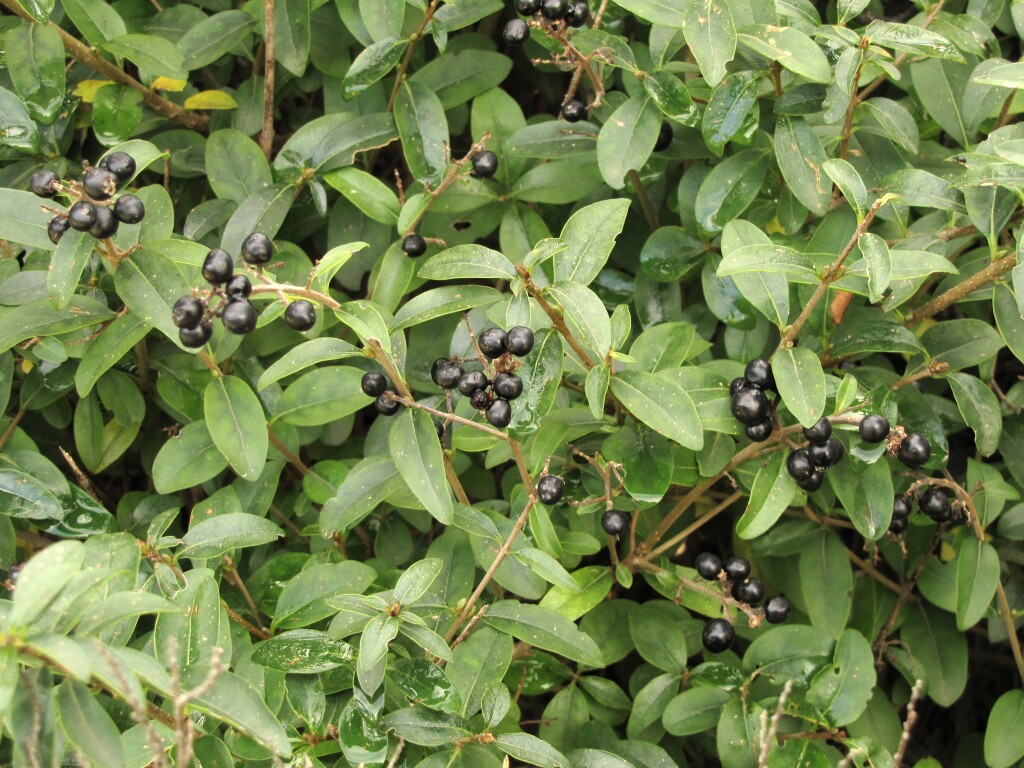Ligustrum vulgare
L. European PrivetShrub to c. 5 m high, evergreen in Victoria (deciduous in colder climates); stems with white lenticels, finely pubescent when young. Leaves lanceolate to elliptic, mostly 2.5–6 cm long and 8–20 mm wide, acute, margins recurved, c. concolorous, glabrous; petiole 1–3 mm long. Panicles terminal, 3–8 cm long, dense, pyramidal; pedicels 1–2 mm long. Flowers strongly scented; calyx c. 1.5 mm long, with obscure triangular teeth; corolla 4–5 mm long, white or cream, tube less than or about as long as the lobes which are slightly reflexed at anthesis; stamens c. 2.5 mm long, anthers exserted. Berry ovoid to globose, 5–6 mm diam., fleshy, lustrous, blue-black; seeds usually 2. Flowers spring.
MuM, VVP, VRiv, GipP, OtP, WaP, Gold, CVU, DunT, NIS, HSF, HNF, OtR, Strz. Also naturalised in SA, Qld, NSW, Tas. Native to the Mediterranean region. A commonly grown hedge plant that occasionally becomes established outside gardens in Victoria.
Jeanes, J.A. (1999). Oleaceae. In: Walsh, N.G.; Entwisle, T.J., Flora of Victoria Vol. 4, Cornaceae to Asteraceae, pp. 477–483. Inkata Press, Melbourne.
 Spinning
Spinning


